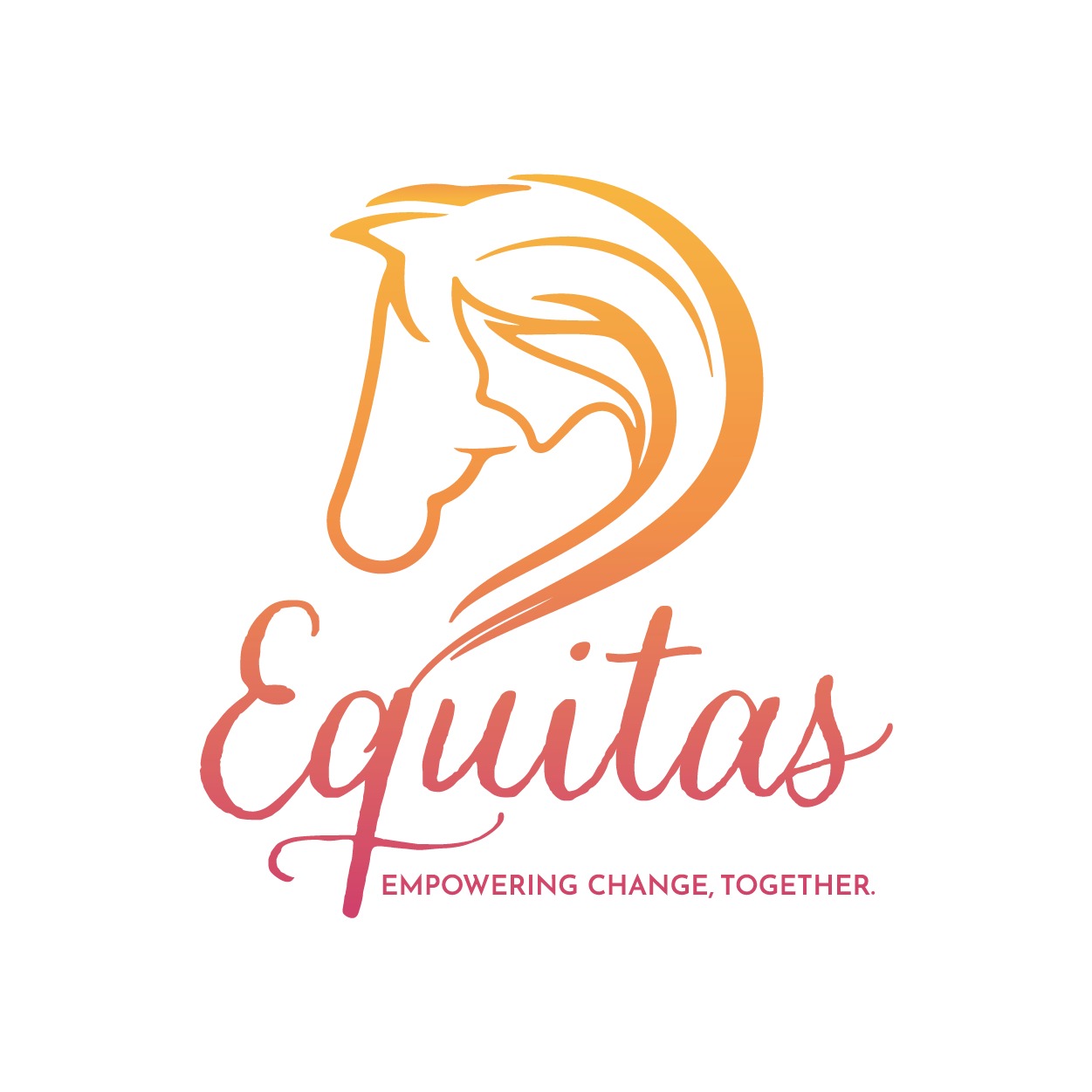From Google to TikTok: The Evolving Digital Habits of Women
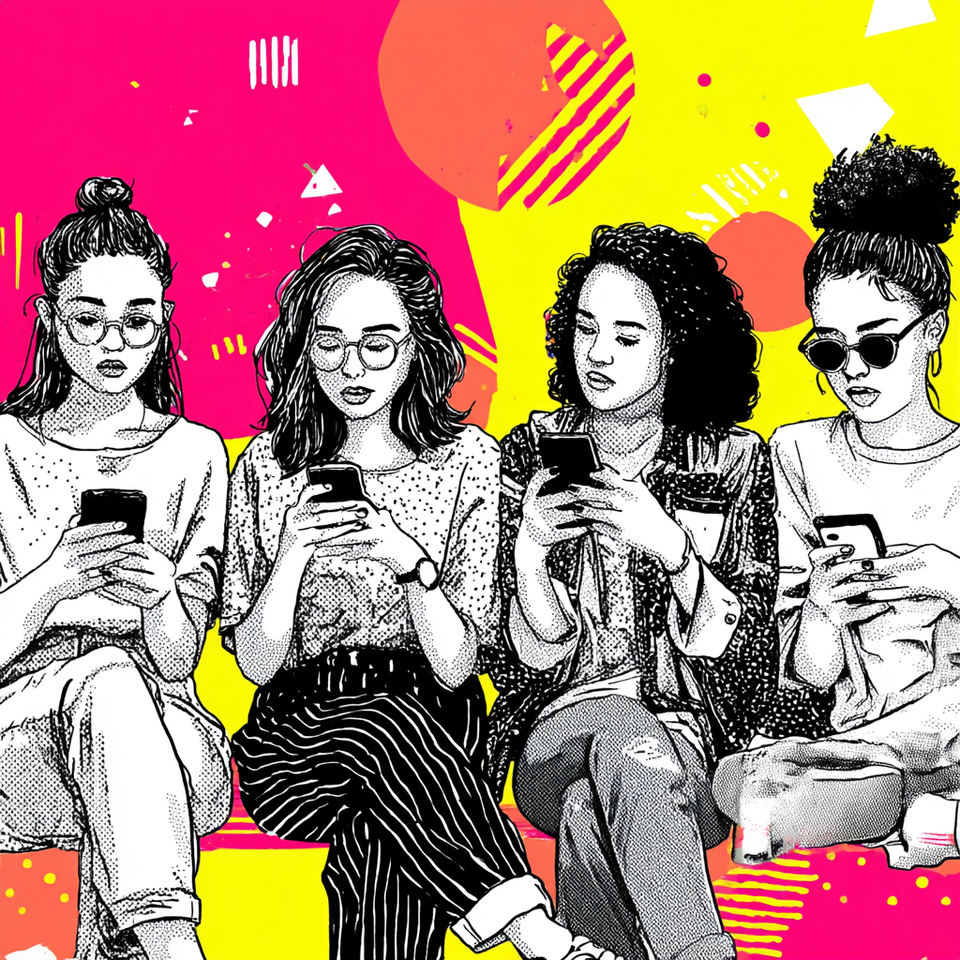
Today, as part of our AI System build research, I am looking at current behaviours of women online ranging from 18-50 years old. Why this range? They will be the quickest to adopt and use AI systems. So to build something useable and scalable we initially focus on aiming it at the market that would adopt it the fastest and would get the most value from it.
Again, at this stage, we still have no idea what we are building. The research will show options and potential pathways forward and then we will decide what makes the most sense and add our collective reasoning behind it.
Yesterday, we did a deep research paper on "How AI will evolve Women's Lives" - got a 44 page doc back full of patterns, behaviours and uses cases of where AI could enhance women's lives around the world. Then today I am looking at women from 18-50 and their current behaviours online and across social media.
The goal across the next 48hrs is to blend these research findings together. The the next step then is to examine causation and correlations between both data sets with the goal of understanding where the gaps and opportunities are...
This should get us to a point where we have a more comprehensive understanding and more educated views on what we could build, why we should build that, why it is relevant and the potential value and support that particular AI System could offer a user based on their current habits and behaviours.
AI gives us an incredible ability to link data. To measure causation and correlation. Patterns and underlying trends... to make bolder but far more quantified predictions.
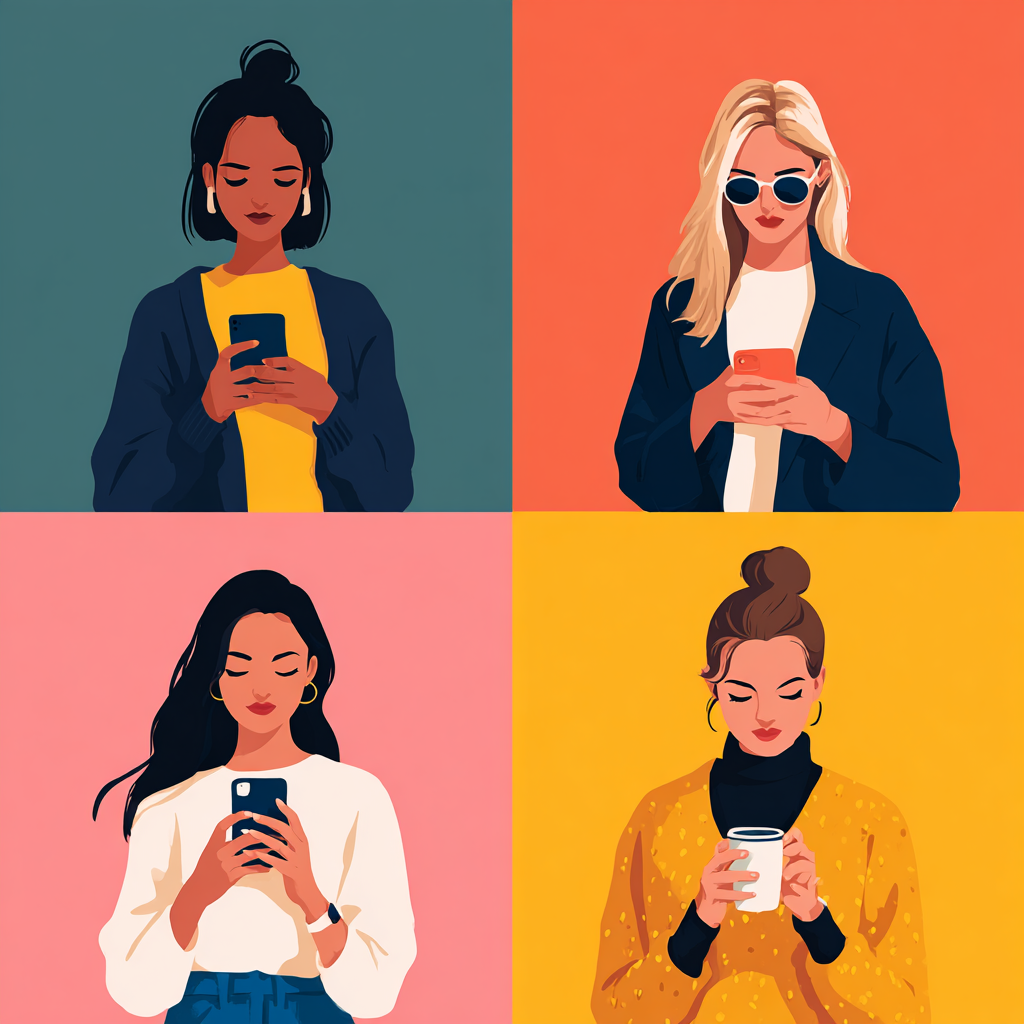
So here is today's piece... a deep research article that gives you a 360 view on the behaviours of women online and across social media worldwide. It is an intriguing read. A worthwhile read.
** This is a ChatGPT Deep Research Article.
From Google to TikTok: The Evolving Digital Habits of Women:
Imagine a 22-year-old woman searching for tonight’s dinner recipe: instead of “Googling” it, she opens TikTok and watches a quick cooking clip. Meanwhile, a 35-year-old might still type her query into Google or scroll through a trusted food blog on Facebook. In today’s world, these two scenarios speak volumes about a growing digital divide. Women of different generations – particularly Gen Z and Millennials – are inhabiting two distinct online worlds. And as their habits shift, they are redefining how content is created, consumed, and communicated across the internet.
Decision-makers in media, tech, and consumer industries are taking note. What are these shifts telling us, and how should strategies adapt? Below, we delve into the contrasts and surprises in how women across Gen Z and Millennial cohorts use platforms like Google, TikTok, YouTube, Facebook, X (formerly Twitter), and Instagram. We explore their content consumption patterns, search behaviours, buyer journeys, and media/news habits – revealing how the past decade’s digital evolution has led us here, and where the next five years might take us.
Two Generations, Two Digital Worlds
To engage both Gen Z and Millennial women, one must first understand how differently they navigate the online realm. Gen Z (roughly teens to mid-20s today) are true digital natives – born into smartphones and social media – whereas Millennials (late 20s to 40-ish) witnessed the internet’s adolescence and remember life before constant connectivity. This upbringing shapes everything from preferred platforms to attention spans. In brief:
- Platform Preferences: Gen Z women practically live on TikTok and Instagram (with YouTube a close staple), while Millennial women maintain a strong presence on Facebook and still use platforms like X (Twitter) alongside Instagram and YouTube. Newer apps (think BeReal or whatever’s trending this year) quickly attract Gen Z curiosity, whereas Millennials tend to stick with the familiar even as they adopt new features more slowly.
- Content Style & Format: Gen Z gravitates to short-form, visual, and unfiltered content. Snappy videos, ephemeral stories, memes – if it’s fast and authentic, it resonates. Millennial women, on the other hand, have more patience for long-form, “polished” content. They’ll read longer articles, watch a 20-minute YouTube tutorial, or swipe through a detailed Instagram carousel if it offers value. Highly curated branding that might bore Gen Z can still appeal to Millennials who appreciate a bit of polish and depth.
- Trust and Influence: Influencers and peer creators hold major sway for Gen Z. Younger women are quick to trust relatable online personalities – a makeup tip from a TikTok creator or a book recommendation from an Instagram micro-influencer often carries more weight than an ad or a company’s own post. Millennial women certainly follow influencers too, but they balance this with more scepticism; they’re more likely to fact-check, seek expert opinions or stick with brands they’ve trusted over the years. In short, Gen Z trust “people like me” online, while Millennials still put some stock in authority and brand credibility.
- Device Use: Both generations are glued to their phones, but Gen Z is truly mobile-first (and mobile-only in many cases). They create and consume nearly everything on the small screen. Millennials, while heavy smartphone users, are more likely to multitask across devices – toggling from a laptop at work to a tablet or phone in the evening. This means Millennial women might discover a product on a phone but switch to a desktop to purchase, whereas Gen Z may do all steps on mobile without ever looking up from their device.
- Daily Time and Multitasking: Don’t be mistaken – both groups spend an enormous amount of time online. Gen Z women top the charts at nearly 3 hours per day on social media alone, and Millennials are only a shade behind (they’ve simply spread that time across more platforms and tasks). One key difference is how they spend that time: A Gen Z woman might immerse herself in a single app (endless TikTok scrolling), whereas a Millennial might split her attention, e.g. streaming a YouTube video in the background while browsing Facebook or listening to a podcast.
These broad distinctions set the stage. Now let’s dive deeper into specific digital behaviours – and some of the most surprising shifts underway.
Searching for Answers: Google vs. TikTok
For years, “Google it” was the default advice for finding information online. Millennials, who grew up with Google’s rise, are largely still faithful users – turning to Google Search for everything from health questions to product reviews. But among Gen Z women, a startling trend has emerged: they’re increasingly treating TikTok (and Instagram) as search engines in their own right.
It may sound counter-intuitive. TikTok is known for dance challenges and viral memes, not for answering questions about the best moisturiser for dry skin or what tonight’s news headlines mean. Yet, that’s exactly how Gen Z is using it. Looking for a new hairstyle idea or honest reviews of a product? A Gen Z user might skip Google altogether and search on TikTok, where the “results” are video clips from real people showing and telling, rather than a list of webpages. The appeal is clear – the content feels alive and relevant. Instead of sifting through text or suspect sponsored links on Google, they get a 30-second visual answer from someone who feels like a peer.
Indeed, surveys now show that in some categories TikTok has leapfrogged Google as the go-to search tool for young people. Many Gen Z women say they search first on TikTok or Instagram when it comes to things like local restaurant reviews, fashion inspiration, how-to guides, and even health and wellness tips. Google still has its place (it’s not disappearing overnight), but it’s telling that Google’s own executives have acknowledged this shift – noting that nearly half of younger users now start looking for information on social apps instead of traditional search engines.
Why this dramatic change? Gen Z cites a few reasons. Short videos are engaging and easy to digest – it’s often quicker to watch someone demonstrate a skincare routine than to read a lengthy article about it. The results on TikTok also feel more “real” and tailored: you’re hearing from individuals who often speak candidly or show proof of their experience, rather than wading through text that might be SEO-optimised gibberish. There’s also a sense of community filtering – if a TikTok video about “best cafes in London” has thousands of likes and comments, a Gen Z searcher trusts that community endorsement in a way that Google’s algorithmic ranking can’t replicate.
Millennial women, by comparison, still lean on Google out of habit and trust. They grew comfortable with Google’s ability to surface diverse sources, and many haven’t yet developed the instinct to “TikTok it.” However, even Millennials have started to use YouTube as a quasi-search engine for how-to content over the years, and some are now checking TikTok or Instagram for things like travel recommendations or recipes. The difference is they tend to treat these platforms as supplemental: a Millennial might Google for background information, then head to YouTube for a detailed tutorial, and maybe pop into Instagram for visuals or TikTok for a quick take – effectively using all channels. Gen Z, by contrast, often finds what they need within a single social platform’s ecosystem, reducing the need to go “out” to the wider web at all.
The implications of this shift are huge. For one, search behaviour becoming fragmented means brands and information providers must adapt. If younger women are looking up makeup tips on TikTok rather than on Google, cosmetics brands and content creators need to have a TikTok presence with searchable content. It’s no longer enough to top the Google results; one must also show up in the social search results – which may mean mastering hashtags, in-app SEO, and algorithm trends of these platforms.
Also, the nature of information is changing. The rising generation expects information to come packaged as entertaining, bite-sized videos with a strong point of view. The days of capturing their attention via a long list of blue links are fading. Google is not blind to this – we see it responding by incorporating more visual and short-form results (even indexing TikTok videos) and pushing platforms like YouTube Shorts. The battle for Gen Z’s search habits is on, and it’s reshaping how knowledge is sought and found online.
Content Consumption & Social Platforms: Scrolling in Different Feeds
When it comes to where women spend their time online and what content they consume, Gen Z and Millennials have both overlapping and diverging preferences. Both generations are active on major social platforms – but how they use them and what they seek out can differ greatly.
Facebook vs. Instagram vs. TikTok: Perhaps the starkest contrast is on Facebook. For Millennial women, Facebook was the epicentre of their early social media life and many remain active on it to connect with family, old school friends, local community groups, or simply out of habit. They might browse Facebook daily or a few times a week, follow news pages, and post life updates or family photos. Gen Z women, however, often regard Facebook as a bit of a digital dinosaur – something they may have an account on (likely made in their teens, possibly at a parent’s urging) but rarely actively use. Younger women describe Facebook as “where my mum is” or just for events and the occasional peek into a group. Their social energy has largely moved elsewhere.
Instagram holds broad appeal to both groups, but the usage patterns differ. Millennial women embraced Instagram when it launched (many in their 20s at the time) and shaped the era of the curated photo grid – carefully selecting and editing images of life’s highlights. They still use Instagram often, following friends, influencers, and brands, and many enjoy features like Stories for quick updates. Gen Z women, though, have injected new life into Instagram by breaking the curation norms. They might maintain multiple accounts (a polished public persona versus a “spam” account for close friends where they post sillier, unfiltered content). They communicate heavily via Instagram DMs, practically using it as a messaging app. And while they too love Stories, they’re less concerned with a picture-perfect feed – in fact, authenticity is key, so a Gen Z user might ironically post a casual photo dump with witty captions, a style that resonates with her peers. Both generations overlap in their love for Instagram, especially for fashion, beauty, and lifestyle content – but Gen Z has pushed Instagram to be more spontaneous (perhaps influenced by the ethos of apps like BeReal), while Millennials still appreciate its visual polish.
TikTok is the reigning queen for Gen Z content consumption. Ask a Gen Z woman what her favourite way to unwind or catch up is, and many will say, “I scroll TikTok.” The platform’s algorithmic feed serves up an endless buffet of highly engaging videos tailored to her interests – whether that’s comedy skits, dance trends, makeup tutorials, or mini-documentaries. Importantly, TikTok isn’t just entertainment for younger women; it’s also a discovery engine (as discussed earlier) and a community space. There’s a TikTok subculture for every niche – #BeautyTok, #BookTok (for book lovers), #FoodTok, #DanceTok, and beyond – and Gen Z women dive into these sub-communities voraciously. Millennials, in increasing numbers, have also joined TikTok (curiosity and pandemic boredom brought many in their 30s onto the app). They do enjoy it, but usage is generally more passive. A Millennial might open TikTok when a younger colleague or her own children send a particularly funny video, or sporadically browse trends to feel “in the loop.” By and large, though, TikTok is a daily habit for Gen Z and an occasional amusement for many Millennials.
YouTube and Long-Form Video: YouTube stands as a bit of a bridge between the generations. Both Gen Z and Millennial women use YouTube heavily, but again, how they use it can differ. Millennials treat YouTube almost like a second Google (or a modern TV). They’ll search for product reviews (“is this pram worth it?”), watch how-to guides (from DIY home fixes to learning a new recipe in a 15-minute cooking demo), or follow vloggers and creators whose longer videos they enjoy regularly. Many Millennial moms, for instance, might subscribe to family vlog channels or fitness instructors and watch those on a tablet while cooking or during a workout. Gen Z women certainly use YouTube as well – particularly for music, gaming content, or following big YouTube personalities – but their attention has somewhat shifted to shorter-form video on TikTok. That said, YouTube’s introduction of YouTube Shorts (their TikTok-like feature) has seen quick adoption by Gen Z. A younger woman might bounce between watching a 45-second Short and a 20-minute storytime vlog, but if it’s not gripping, she’ll click away faster than her Millennial counterpart. In essence, Gen Z’s YouTube consumption is more “snackable” and trend-driven, whereas Millennials are willing to settle in for a full meal of content on YouTube.
Twitter/X and Reddit: When it comes to more text-based or newsy social platforms, Millennials have been the primary female user base historically. Twitter (now X) has many Millennial women engaging in conversations about news, social issues, or their professional fields. They got used to the fast-paced, text-first environment of Twitter in the 2010s. Gen Z women, however, are generally less drawn to X. Those who do use it often do so in niche ways – perhaps as fans in a K-pop stan community, or activists around a cause, or simply to follow celebrities. But it’s far from a must-have daily app for most young women. Reddit is interesting: it’s not typically broken down by gender in the public eye, but many women (especially Millennials) use Reddit for specific interests (from bridal planning forums to career advice threads). Gen Z women do increasingly browse Reddit for candid information (it can feel more “real” than a polished blog post), and they frequent Reddit communities that align with their interests (for instance, skincare or relationship advice subreddits). Yet, Reddit remains somewhat more popular with male users overall – among women, it’s a useful tool but not as defining as visual social platforms.
Content Tastes: Beyond which platforms they frequent, the kind of content each generation of women engages with highlights an evolution in tastes. Millennial content consumption often has an element of intentionality – they seek out content that interests them or provides value. For example, a Millennial might subscribe to email newsletters for news or follow Facebook pages of favourite magazines and click through to read articles during commutes. They might dedicate time to watch a livestreamed panel discussion or a how-to webinar. Gen Z content consumption is more immersive and serendipitous – they let the algorithm or social network guide them to what’s next, which results in a broader mix of content, often consumed in rapid, overlapping bursts. A Gen Z woman’s evening might involve scrolling through 50 short videos, sending 5 of them to friends, commenting on a couple, then flipping to Instagram to reply to DMs, then to YouTube for a music video – all within the same hour. This hyper-engagement across mediums means Gen Z is exposed to a wide array of micro-content, whereas Millennials might focus longer on a single piece before moving on.
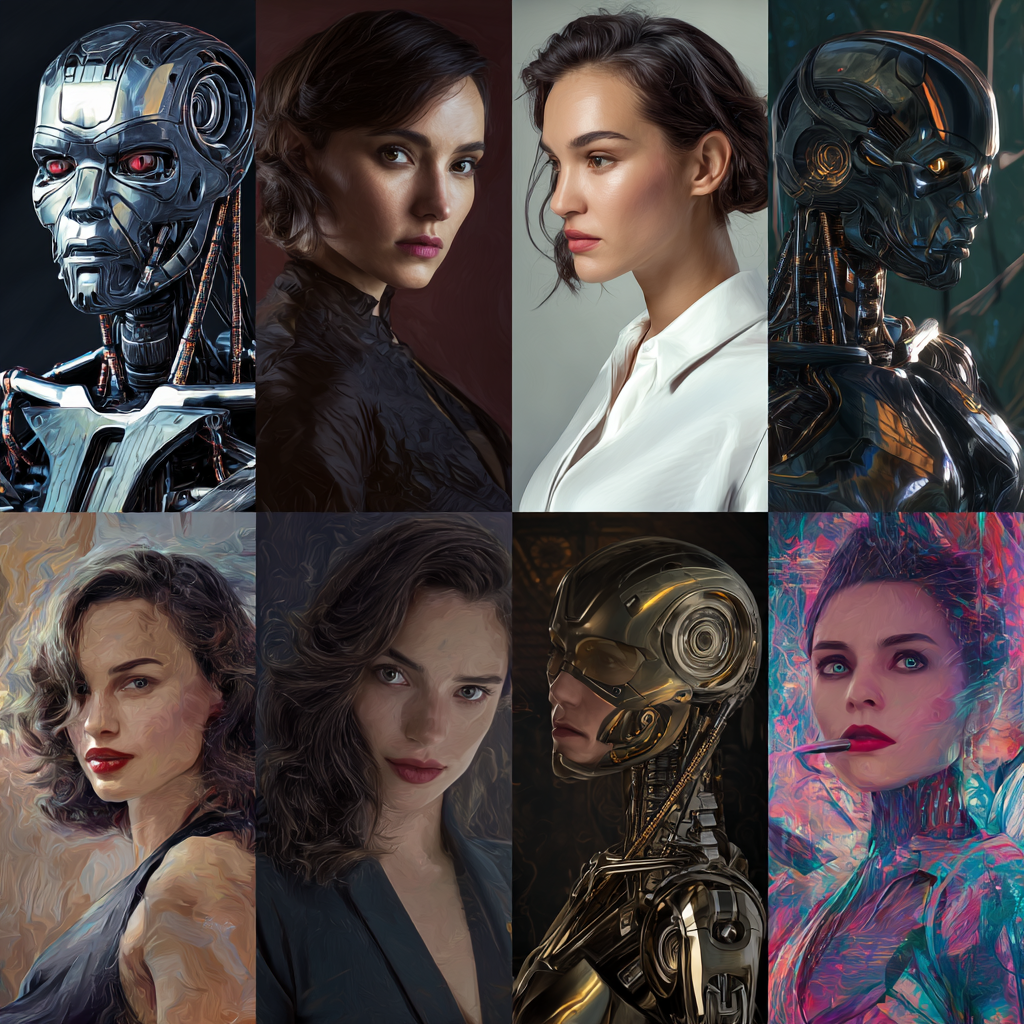
Authenticity vs. Aesthetics: One more subtle but important point: in content style, authenticity is the currency for Gen Z. They have a finely tuned radar for anything that feels overly commercial or insincere. They often prefer a grainy TikTok from a creator ranting honestly about a bad day over a slick ad with a contrived message. Millennial women, coming from the era where social media was about curating your best life, appreciate authenticity too (and have grown somewhat tired of overly perfect influencer tropes). But they still respond well to content that looks well-crafted and informative, even if it’s branded, as long as it aligns with their interests. The key difference is degree: Younger women want brands and media to speak their language, adapt the memes, be real and even self-deprecating. Older millennials might not require that level of relatability in every message – a beautiful travel video or a thoughtfully written blog post can still win them over, even if the tone is more formal.
In summary, both generations are heavy consumers of digital content, but the channels and formats through which that consumption happens have evolved dramatically. For those in media and digital strategy, it means one size will not fit all – a multi-platform, multi-format approach is essential to meet women where they are, whether that’s a trending dance clip on TikTok or a thoughtfully crafted article shared on Facebook.
From Inspiration to Purchase: The New Buyer Journey
Digital habits don’t just shape what content women consume – they also transform how women shop and make purchasing decisions. The classic “buyer’s journey” (awareness, consideration, decision) has been fundamentally rewritten by social media, and again we see a generational split in exactly how this plays out.
For Gen Z women, shopping is a seamless extension of their social and content experiences. This generation was the force behind the viral trend #TikTokMadeMeBuyIt, which encapsulates how a product can explode in popularity literally overnight thanks to TikTok. It works like this: a young woman scrolling TikTok stumbles on a video of someone demonstrating an amazing new curling iron or a must-have kitchen gadget. The video is entertaining, genuine, and maybe shows dramatic results; within seconds, she’s intrigued. One tap on the embedded product link or a quick search later, she’s on the product page and hitting “buy now”. Impulse purchases thrive in this environment – not because Gen Z women are frivolous, but because the social content itself serves as both the marketing and the first-hand review. In their eyes, they did do research – they saw it with their own eyes on a trusted peer’s video!
Social platforms have capitalised on this by introducing in-app shopping features. Gen Z is comfortable with these: they’ll shop directly on Instagram (via shoppable posts or brand stories), buy through TikTok Shop when available, and follow their favourite creators to whatever platform or affiliate link is needed to grab that item everyone’s talking about. Influencers are effectively the new storefronts – a recommendation from a favourite YouTuber or TikToker can carry more weight than a prime shelf position in a brick-and-mortar store. In fact, recent surveys show that a clear majority of Gen Z women have purchased products after seeing them on social media, and TikTok in particular exerts an outsized influence on what they decide to buy. The path from inspiration to purchase can be just a few swipes long: see it, want it, buy it – often all within the same app.
Millennial women approach the buyer journey a bit differently. This isn’t to say they aren’t influenced by social media or online trends – they absolutely are – but their process typically involves more deliberate research. A Millennial shopper might see that same trending curling iron on her Instagram feed or via a friend’s Facebook post. But before purchasing, she’s likely to do a few extra steps: Google the product to read reviews, check Amazon or a price comparison site, maybe visit the brand’s official website for specs, and perhaps even solicit opinions from friends (“Has anyone tried this?”) on her social network of choice. In other words, she often uses the broader internet as a vetting tool, beyond the initial social spark.
This generational contrast is partly about habit and partly about life stage. Many Millennial women have more responsibilities (careers, families, tighter budgets) that encourage them to be careful shoppers – they remember the early days of online shopping scams or getting burned by poor quality purchases, so they’ve learned to double-check. Gen Z, often younger and with fewer big financial commitments (and having grown up in a more sophisticated e-commerce era with easy returns), tends to be more comfortable taking a risk on a product that “looks legit” from a quick video. They trust the crowd – if thousands of other TikTok users are raving about it, it must be good, right?
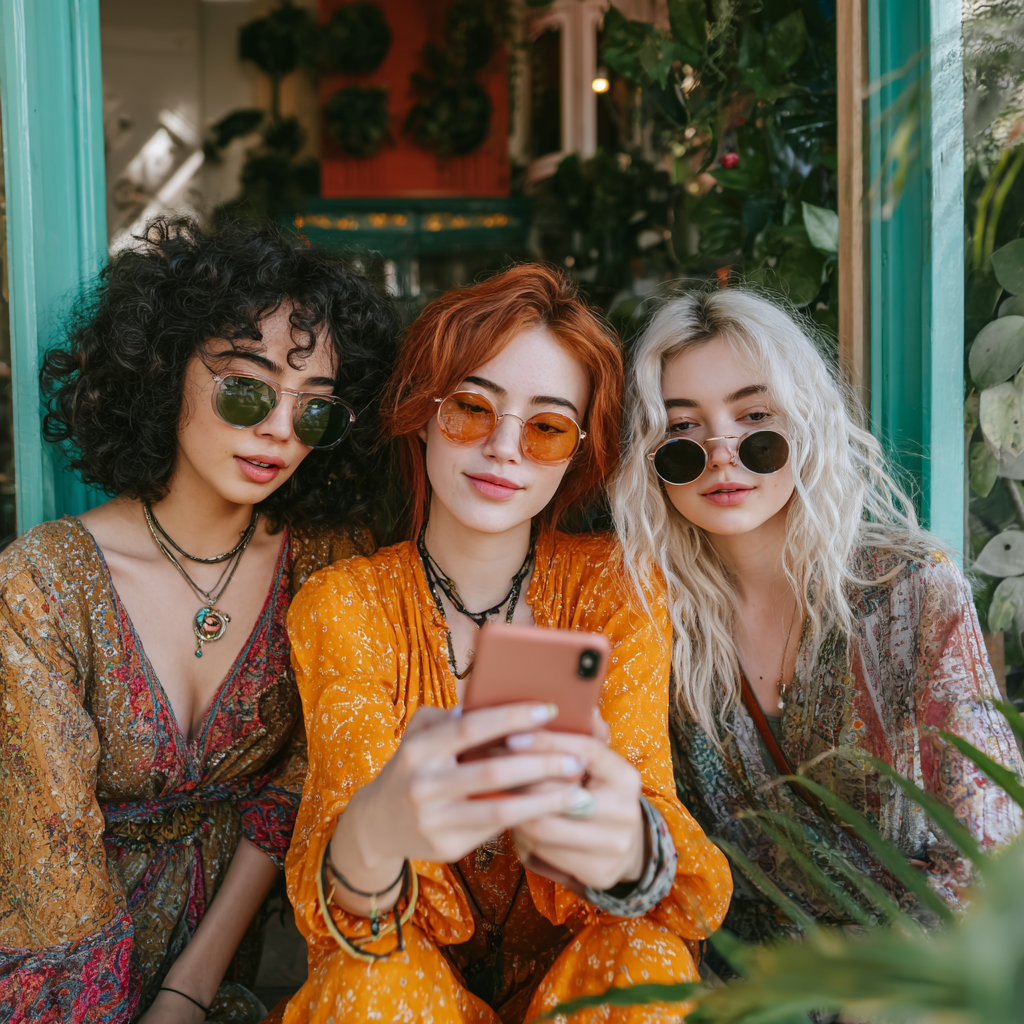
It’s also worth noting the types of products influenced by each approach. Gen Z’s social media-fuelled buys often lean toward beauty, fashion, tech gadgets, and quirky lifestyle items – things that are visually demonstrable in a quick clip. Millennials certainly buy in those categories too, but when it comes to bigger or more complex purchases (say, choosing a financial service, booking travel, buying home appliances), Millennials are more likely to revert to traditional research behaviors (reading articles, Consumer Reports, asking for recommendations on Facebook groups, etc.). Gen Z is just starting to enter that stage of life for big purchases, and as they do, it will be fascinating to see if they bring their TikTok search habits to, for example, finding a new bank or choosing insurance. (It’s not far-fetched – already there are TikTok creators giving out personal finance advice and product recommendations that many young people follow avidly.)
Social commerce is one area where the gap between generations might be narrowing rapidly. The pandemic accelerated online shopping for everyone, and both Gen Z and Millennials learned new ways to purchase through social apps out of necessity. Today, the difference is in degree: Gen Z women might do most of their product discovery and even purchasing via social channels, whereas Millennial women might use social for discovery but then complete the transaction on a laptop after a bit more thought.
One striking statistic showing this convergence is the rise of Facebook Marketplace and Instagram shopping among Millennials, while TikTok shopping features draw in older users too. In fact, globally, Facebook still leads as the single biggest platform for direct social media purchases (a lot of that driven by Millennial and Gen X users). But TikTok is catching up incredibly fast, nearly matching Facebook’s influence in some markets, thanks to that younger demographic. Instagram sits somewhere in the middle, popular for both generations as a place to find new brands – for example, a Millennial mom might scroll Instagram and find a boutique baby product that she then buys from the brand’s site, while a Gen Z college student might click an Instagram ad and purchase within a few taps through Instagram’s own checkout.
What’s clear is that the buyer’s journey has become far more fluid and looped. It’s not the neat funnel of old. A woman could be “just browsing” funny videos on lunch break and, 10 minutes later, find herself the proud owner of a new pair of shoes recommended by an influencer. Conversely, she might spend days mulling over reviews and YouTube comparisons for a high-end purchase. Brands hoping to reach these consumers have to ensure they’re present at all those touchpoints – the spontaneous inspiration on social media and the deeper information when sought.
For decision-makers, this shift highlights the need for an integrated approach: influencer partnerships, authentic user-generated content, and easy social shopping options to capture Gen Z’s attention, alongside robust information, reviews, and multichannel presence to satisfy Millennial due diligence. The commercial response to these changes has already begun – we see more brands sending PR boxes to TikTok creators rather than traditional ads, more “review style” content being produced by companies, and a race to streamline one-click purchasing on every platform.
In sum, Gen Z and Millennial women might take different routes to a purchase, but both are heavily influenced by the digital environments they immerse themselves in. The journey from seeing an item to buying it is faster and more story-driven than ever for the young, and still methodical (if somewhat shorter than a decade ago) for the older. And one thing is certain: the power of peer influence and social proof in driving women’s buying decisions is at an all-time high.
Platforms driving direct social purchases among women have shifted — Facebook once dominated, but TikTok is now nearly on par, reflecting how younger consumers have rapidly embraced in-app shopping.
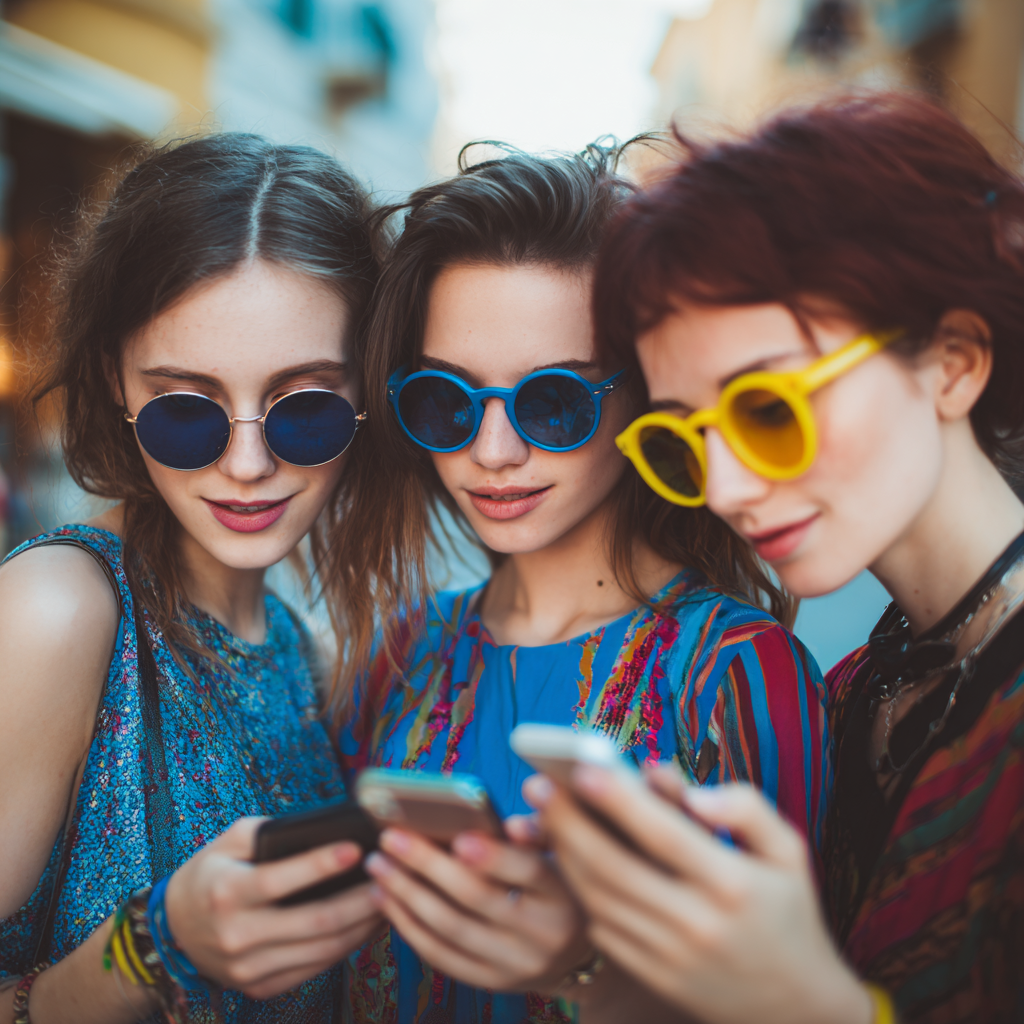
News and Media Consumption: Influencers as the New Anchors
Where do women get their news and information in 2025? The answer increasingly depends on when they were born. The days of everyone sitting down to watch the 6 o’clock news or thumbing through the morning paper are mostly gone, but what’s replacing those for younger vs. older audiences is quite revealing. For Millennial women, many of whom entered adulthood just as social media and online news rose, there’s often a hybrid approach. For Gen Z women, a huge slice of their news diet is coming from social feeds – often via voices that are decidedly not traditional journalists.
Let’s start with Millennials and news. This cohort still remembers 9/11 or the 2008 financial crisis as events they might’ve watched on cable news or read about on Yahoo News, and that shapes a certain respect for established news sources. Many Millennial women continue to follow mainstream outlets – but how they access them has changed. Rather than picking up a print newspaper, a Millennial might subscribe to a digital news app, or she “likes” her favourite newspaper’s Facebook page and sees headlines in her feed. Perhaps she listens to news podcasts or has push notifications from a news app on her phone. The key is that traditional media brands are still in her orbit, even if the medium is digital. Twitter (X) also became an important news ticker for many Millennials – a place to get breaking news and live commentary directly from journalists and commentators. It’s not universal (not everyone enjoys the often combative Twitter atmosphere), but a notable segment of Millennial women use it to stay informed on topics they care about, from politics to entertainment gossip.
Now, Gen Z and news – this is where things get intriguing. Study after study has found that Gen Z is less likely to actively seek out traditional news outlets. Instead, they stumble upon news via social media, and often the first tellings of a news story they hear come from influencers or peers, not newsroom editors. For example, consider a major event like a government election or a celebrity controversy. A Gen Z woman might first hear about it on TikTok, through a clip of someone explaining what happened in an irreverent, relatable way – maybe set to a trending sound clip for good measure. Or she might see a meme about it on Instagram, which piques her curiosity to find out the context. Only after that initial exposure might she dig deeper (possibly Googling for details or, quite likely, looking for more TikToks on the topic to get a quick take).
Surveys confirm this pattern: a significantly higher percentage of Gen Z (compared to older groups) say they get news daily from social media platforms. Instagram and TikTok have even become top sources of news for teens and young adults. It’s somewhat ironic – platforms designed for photo sharing and viral dance videos are now among the leading distributors of current events info to the youth. But it speaks to a broader trend: influencer-led news is a real phenomenon. This doesn’t necessarily mean a beauty vlogger is reporting on geopolitics. Rather, new media personalities have risen who blend entertainment and news – think of a YouTuber who breaks down the day’s headlines with humour and cuts, or a TikTok activist who highlights social justice stories that might not lead on CNN but resonate with young viewers.
Crucially, Gen Z’s trust model differs. If a Millennial woman reads a report from The Guardian or watches a BBC segment, she might grant it credibility because of the institution behind it. Gen Z, according to research, tends to grant credibility based on the individual delivering the news. If they’ve found a TikTok creator who has consistently given fair, thoughtful takes, they’ll trust that person (even if they’re just some guy in his bedroom with an iPhone camera) more than a faceless news corporation, which they might associate with biases or stale perspectives. They also value seeing multiple viewpoints quickly – the algorithm might show them one TikTok framing an issue one way, then another TikTok with a contrasting opinion, and through comments and duets, they absorb a kind of crowdsourced consensus or debate.
For better or worse, this means traditional media is having to reinvent itself to capture Gen Z attention. We’re seeing outlets hiring young presenters to do TikTok news briefs, or creating Instagram infographic slides that simplify complex stories into a few visual panels – snackable content to fit short attention spans. Some forward-thinking journalists run their own social media brands, building a follower base that trusts them (not just their employer). The lines between “journalist” and “influencer” are blurring when it comes to reaching young audiences.
Millennials are also part of the social media news shift, though in a slightly different way. Many Millennial women use social platforms to follow actual news organisations or journalists – for example, following a war correspondent on X for live updates, or joining a Facebook group that discusses local city council news. In their case, social media is a distribution channel for traditional news, whereas for Gen Z, social media often is the source (with traditional news as a later reference if needed).
Another interesting shift is the format of news content. Millennials might still read long-form articles if deeply interested, or watch a 30-minute Vice News documentary on YouTube about an issue. Gen Z tends to prefer short-form explainers, Q&As, and visual storytelling. A 60-second explainer on why inflation is rising, complete with subtitles, charts popping up, and the speaker pointing to text bubbles, might stick in their mind more than a written op-ed. If they want to delve further, they often seek out content like a relevant Reddit thread or an extended YouTube video – but the entry point remains that quick, engaging blurb on social.
The risk here is obvious: misinformation can flourish when content is brief and virality is valued over nuance. Both generations are aware of this risk, but they handle it differently. Millennial women, having seen the social media misinformation plagues of the past decade, may be somewhat more wary – they remember the era of fake Facebook news circa 2016 and might emphasise checking sources. Gen Z women, interestingly, often express skepticism of mainstream media bias yet simultaneously trust what they see on social if it’s presented by someone authentic. The onus is increasingly on media literacy being built into these platforms (and education) so that young users learn to cross-verify even the charismatic TikTok news commentator’s claims.
In summary, younger women have effectively “democratised” news for themselves via social media, curating a feed of voices that double as their news anchors – whether those are YouTubers, TikTokers, or Instagram commentators. Older women are in that mix too but still keep one foot in the world of legacy media. For media companies and content strategists, this means to reach Gen Z, one must be social-first, personality-driven, and visual, and to keep Millennials, one must continue to provide depth and credibility while leveraging social channels for reach.
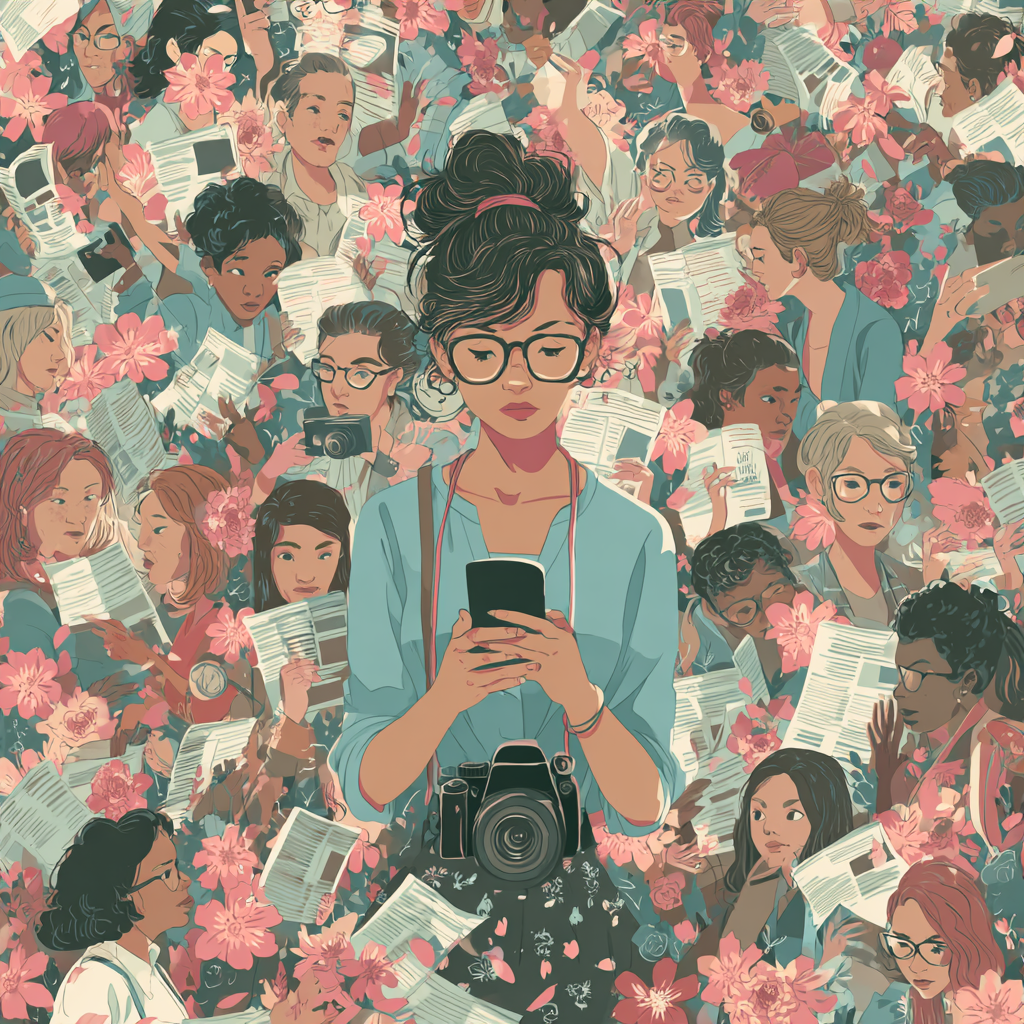
The evolution of news consumption underscores a broader theme of this article: authority is being redefined online. Influence is earned not just by institutions and expertise, but by relatability, consistency, and engagement. A teenager in her bedroom can now command more of young women’s attention and trust than a global newsroom – a reality that is both empowering and challenging for the future of informed societies.
Niche Spotlight: The Equestrian Community Goes Digital
Amid all these broad trends, it’s worth examining a specific niche that might seem worlds away from TikToks and tweets: the equestrian community. Horse riding and equestrian sports are often viewed as traditional, even old-fashioned pursuits. Yet here, too, the digital behaviours of women (young and older) have evolved dramatically – making the equestrian niche a fascinating case study in digital engagement.
Equestrian enthusiasts, many of whom are women and girls, have embraced social media to connect over their shared love of horses. Instagram in particular galloped ahead as a platform of choice: it turns out that beautiful photos of horses, riding outfits, and pastoral stable scenes are perfect Instagram fodder. Over the past 5–10 years, a number of equestrian influencers and content creators have emerged, amassing significant followings. These range from professional riders who vlog their competition journeys, to hobbyists who share daily life at the barn, to equestrian fashion and lifestyle personalities who post outfit-of-the-day (“OOTD”) from the stables.
For Gen Z riders, TikTok has also become a playground (or perhaps a stableyard) for creativity. HorseTok is a real subculture: one can find TikTok videos where young women perform choreographed rides to music, show the quirky antics of their horses, or give quick tips on horse care – all packaged in the platform’s signature quick, catchy style. These videos often go viral within the community, forging a sense of global camaraderie among horse lovers who may never meet in person but bond over watching and commenting on each other’s content. A teenager in Ireland can share the joy of her first jumping competition with peers in Canada or Australia through a single TikTok clip – something that was unimaginable when Millennials were that age, unless you were pen pals via equestrian magazines.
Millennial equestrians, for their part, have integrated digital tools as well. Many join Facebook groups dedicated to horse training advice, buying and selling tack, or organising local meet-ups and events. Equestrian forums that existed in the early 2000s have often migrated to social platforms, meaning the discussions that used to happen on niche websites now happen on mainstream social media (sometimes in private groups, sometimes in public). Moreover, YouTube is flush with detailed content for this community: want to learn a specific dressage technique or how to braid a horse’s mane for show day? You’ll find a Millennial or Gen Z rider demonstrating it step-by-step on YouTube.
Even news within this niche follows the generational trend. A younger equestrian might get updates on major competitions or horse health alerts via an influencer’s Instagram story or a quick TikTok newsflash (“Did you hear what happened at the Olympic equestrian event today? Here’s the drama…”). Older enthusiasts might still follow official equestrian federation feeds or subscribe to specialised newsletters for that info. Yet, the two worlds inevitably overlap – the official organisations now actively use social media, and influencers often relay official news mixed with personal commentary.
From a commercial perspective, the equestrian world illustrates how niche brands and businesses have adapted to digital habits. Tack shops and riding apparel brands, for example, now partner with Instagram influencers who sport their gear in posts, knowing that a recommendation from a beloved rider can drive sales among young followers around the world. Online equestrian marketplaces thrive on Facebook and Instagram, where Millennial riders might sell a used saddle to a Gen Z rider in another state with just a few messages and a PayPal transaction – a far cry from the past era of pinning a notice at the local stable or advertising in a back-page of a magazine.
In essence, the equestrian sub-segment underscores that no interest is too niche to be touched by digital transformation. Women engaged in even the most traditional hobbies have found new ways to augment their passion online: building community, consuming content, following trends, and shopping for their hobby, all through the platforms and behaviours we’ve discussed. It’s a reminder that behind every broad demographic trend, there are countless micro-communities experiencing their own digital evolution, each with lessons on engagement that can apply more broadly. In the case of equestrians, it’s about blending a centuries-old sport with 21st-century connectivity – showing that the love for an activity and the need for authentic connection will always find a way to converge through technology.
The Last Decade and the Next: Evolution and Outlook
To truly appreciate how women’s online habits have arrived at this point – and to anticipate where they’re heading – we should step back and look at the trajectory of the past 5–10 years. The pace of change has been nothing short of breathtaking. Consider that a decade ago, in 2015, TikTok didn’t even exist (it would launch internationally in 2017), Instagram was mainly for pretty photos (no Stories, no Reels), Facebook was the undisputed social giant, and “influencer” was only just becoming a buzzword (mostly via bloggers and early Instagram celebrities). Many Millennial women in 2015 were engrossed in Facebook feeds, perhaps starting to use Instagram; Gen Z women of that time were often still in school, messaging on Snapchat and posting their first Instagram pics, while YouTube was their go-to for online video.
Fast forward to today. The landscape has flipped in notable ways: Facebook’s cultural relevance among the young has plummeted, while TikTok’s meteoric rise has upended how we think of social networks and even search engines. Instagram, owned by Facebook’s parent company, smartly copied Snapchat’s and TikTok’s features (Stories, then Reels) to keep both Millennials and Gen Z engaged, albeit using the platform in new ways. YouTube remains a powerhouse but has had to introduce Shorts to cater to the short-form craze and fend off TikTok’s encroachment. And entirely new paradigms have emerged – for example, the explosion of messaging apps and group chats (WhatsApp, Telegram, Discord) which many women use for community and communication outside the algorithmic public eye.
If the last 5–10 years were about the rise of mobile social networks and influencers, the next 5 years promise further evolution – possibly in unexpected directions. One safe bet is that the preferences of Gen Z today will become even more mainstream as this cohort ages and enters all sectors of society. The authenticity and speed they expect will likely influence how content is delivered to everyone. We can already see Millennials (and even Gen X above them) adapting: plenty of Millennials have embraced TikTok for quick entertainment, and grandparents learned to use Zoom during the pandemic – adaptation happens when value is clear. So, the gap may narrow somewhat as older generations adopt some “Gen Z style” behaviours (we’ve seen many Millennials start to favor Instagram Reels or TikTok for quick content, for instance).
However, Gen Z themselves might pivot as they get older. An interesting dynamic to watch is whether Gen Z will “age into” some of the behaviours of Millennials. As Gen Z women move from college to careers, for example, will they find themselves using LinkedIn (a platform very much embraced by Millennials for professional networking)? Will they start valuing longer-form content when making serious decisions, like buying a home or understanding health issues, thus echoing the Millennial habit of deeper research? Some early signs suggest yes – people’s needs change with life stages – but they’ll still likely expect those experiences to be more digital, interactive, and user-friendly than they were for Millennials. A Gen Z worker might use LinkedIn, but she’ll also likely be on Slack or Discord communities and expect a dash of TikTok-like engagement even in professional content.
The next wave of technology will also play a big role in shaping habits. Artificial intelligence and personalization algorithms are growing ever more powerful. In the coming years, we might see AI curating news feeds or shopping recommendations in an even more hyper-tailored way, which could further reinforce the differences in generational content bubbles. For example, a Millennial woman’s smart news app might learn to deliver her a morning brief from traditional sources she trusts, while a Gen Z woman’s AI-curated feed might include more creator videos and community sentiment analysis around topics. Both generations will benefit from AI-driven convenience (smarter search, virtual assistants planning their day, etc.), but there’s a question of whether this will bridge the gap or widen it. Will AI start nudging Gen Z to consider more diverse sources (mitigating their distrust in mainstream info), or will it just reinforce their current preferences? Will Millennials find AI-generated bite-sized content a good replacement for the blogs and long reads they used to enjoy, or will they double down on wanting human-created depth? These are open questions.
Platform-wise, it’s hard to predict which new app will capture the next generation’s attention (remember, five years ago hardly anyone predicted TikTok’s dominance). There could be a new platform on the horizon that today’s tweens (Gen Alpha) embrace – something perhaps centred around augmented reality or even more immersive live experiences. If such a platform arises, Gen Z might adopt it too, and Millennials might face another decision of whether to jump on or not. Historically, each new major platform sees slower uptake among older users at first (Millennials were slow to join TikTok, Gen X was slow to join Instagram, etc.), so the pattern may continue.
One thing seems certain: the importance of community and authenticity will persist. The specifics may change – today it’s influencer-driven content, tomorrow it could be virtual reality hangouts or holographic vlogs – but the core drivers are human. Both Millennial and Gen Z women seek connection, validation, information, and entertainment. Over the past decade, the means to fulfill those needs shifted from traditional top-down channels to a far more peer-to-peer model, especially for Gen Z. That genie is not going back in the bottle. In the next five years, expect to see even more decentralisation of content creation (more people becoming micro-creators or niche influencers), and an expectation from audiences that brands and media engage in dialogue, not monologue.
For decision-makers reading this editorial, the take-home message is strategic yet simple: meet these women where they are, and where they’re headed. That means rethinking old strategies – SEO and 30-second TV spots might not cut it when a generation doesn’t “google” or watch TV in the same way – and being willing to experiment with new formats and voices. It means investing in understanding the culture of digital natives (why is an unfiltered TikTok more compelling than a slick ad? Why does a Discord chat feel more trustworthy to them than a customer service line?). It also means acknowledging that one size marketing or content strategy no longer fits all generational slices – segmentation and custom approaches are key.
Social media usage has dramatically shifted in the past decade. Platforms like YouTube and Instagram have surged in popularity among young adults, while newer entrants such as TikTok skyrocketed from zero to mainstream in just a few years. (Visual trend: Facebook’s early dominance has plateaued as Gen Z flocks to more interactive platforms.)
Looking at the [embedded chart] above, which illustrates social platform usage trends, we’re reminded how dynamic this space is. Ten years ago, Facebook and traditional search reigned supreme; now we see YouTube at the top in reach, Instagram booming, and TikTok rising from nothing to challenge the giants – all in the span of a few years. This velocity of change shows no sign of slowing. If anything, the next years could bring even more disruption (perhaps driven by technology like AR/VR social experiences or the integration of shopping, entertainment, and community into single super-platforms).
In closing, the digital habits of women across Gen Z and Millennial cohorts offer a window into the broader evolution of consumer behaviour. These shifts are sharp and insightful: they challenge our assumptions and push industries to rethink engagement. A Gen Z woman using TikTok as her encyclopaedia and news channel is not an outlier but a sign of the times. A Millennial woman juggling a podcast, a Facebook feed, and an Amazon review page to decide what stroller to buy epitomises the empowered (if sometimes overloaded) digital consumer of her generation.
The narrative that emerges is one of behavioural evolution and convergence: the baton is passing from the first internet generation to the next, and with it comes new norms. For businesses, media, and tech platforms, the question is how to respond. Those who can spark discussion, adapt strategies, and anticipate where these trends lead in the next five years will be best placed to thrive. Those who ignore them risk speaking to an empty room.
Ultimately, from Google to TikTok, from TV news to influencer feeds, from shopping malls to hashtagged product hauls – women’s digital behaviours are not just changing, they’re shaping the future of the internet. It’s a future that is more interactive, visual, and community-driven than ever. Decision-makers would do well to take note and join the conversation, because this evolution is only accelerating. The opportunity now is to harness these insights to create content, services, and strategies that resonate across generations – bridging the digital divide while respecting the distinct worlds that Gen Z and Millennial women move in. The commercial and cultural rewards await those bold enough to rethink old approaches and ride the new wave of online behaviour.
Article ends.
An incredibly insightful and eye opening read. I loved reading this last night and analysing patterns and behaviours. Now we will connect the deep research paper behind this article and the deep research paper behind yesterdays article and see where we land.
We will report back in the next couple of days most likely early Thursday before me and Muireann go through the findings and start brainstorming analysis.
Fun few days ahead, it is amazing what AI can do and the understanding it can give you. Causation and Correlation... patterns and predictions.
Until Next Time,
Shane
